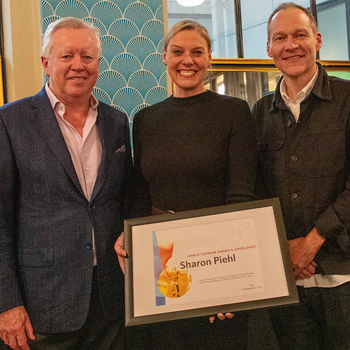 By Cecily McLane, Account Director at FleishmanHillard
By Cecily McLane, Account Director at FleishmanHillard
When some of us rang in the 2020 new year with loud cheers, raised glasses and ‘twenty plenty’ slogans posted across social media, we could not have foreseen how rapidly the world would change.
Certain industries had to adjust and find new ways of working to adapt to their changing environment. One could go as far as to say that the PR industry is among the most agile when it comes to adjusting to new ways of working, therefore, we quickly shifted to meet the demands of this rapidly changing landscape known as the ‘new normal’, and the highly anticipated ‘next normal’.
Not only did we have to remain nimble and change some of our thinking and ways of operating as an industry, but we, of course, had to advise our clients on how to best navigate these challenges on an on-going bases with the view of helping them to recover when the time is right. We could no longer rely on implementing PR strategies and campaigns the ‘traditional’ way and so this gave rise to new trends.
Online content becomes king
In 2020 we sadly saw the closure of too many print publications or some of them moving online.. PR professionals can no longer rely on the traditional press release but have had to find creative ways of tailor-making content for different audiences utilising different platforms. It is essential to understand how to package content for social media platforms, which require bite-size information supported with visuals or video content, rather than traditional long-form article. This, prior to the pandemic, meant gaining a basic grasp of social media or appointing in-house social media personnel to leverage social media channels ensuring maximum reach for clients.
Finding new ways of networking
The closure of publications also saw a reduction in staff, thus fewer points of contacts. Face-to-face networking with media at events has also become a thing of the past, this means putting in more time to be efficient to stay connected via phone calls and virtual conversations. Now more than ever it is necessary to do the research to try and gain an understanding of what journalists and publications require and tailor-making content to that individual or publication’s needs.
In 2020 many people experienced a quick catapult into the digital and remote working space, which has now become second nature for some businesses, with several making it a permanent option for employees. With that came a need for implementing innovative virtual media events. These events will most likely continue, but with both physical and virtual participants and attendees.
Understanding consumer needs
As PR professionals it is our job to advise our clients on the best communications strategies for their business. In this regard research and understanding of consumer behaviour and how the consumer landscape has changed plays a vital role. Having an understanding of how consumers feel and what they expect from brands need to be taken into consideration when drafting strategies. Whether it be, buying from brands that align to their core values, using new tech to make more personalised human connections and improve the customer experience online or transparency about how organisations are prioritising the health and safety of their customers and their staff.
The ultimate challenge in 2021 will be for PR professionals to place further emphasis on innovation by driving and bringing the big ideas to life to capture media and consumer attention in an already cluttered environment and a fragile economy.
Find Out More
-
Digital Insights Bulletin - October 2024
October 31, 2024
-
Sharon Piehl Wins 32nd Annual John D. Graham Award for Excellence
October 25, 2024
-
Digital Insights Bulletin - September 2024
September 30, 2024


